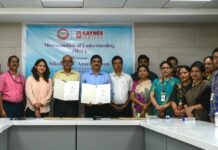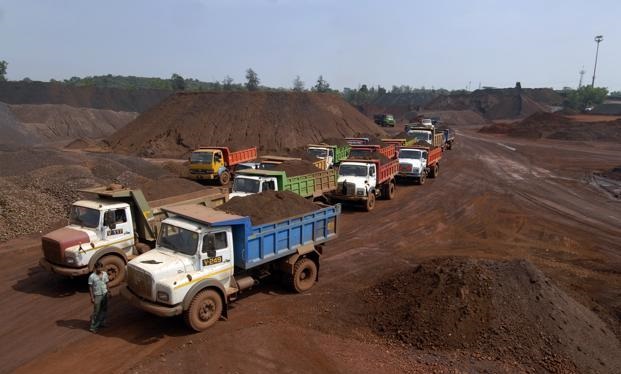By Anurjay Dhal
BHUBANESWAR: The Federation of Indian Mineral Industries(FIMI) and the Indian Steel Association (ISA) on Friday faced off with the Mining Body writing a letter bearing B/8/20/1681 dated December 31, 2020 to Dr P K Mishra, Principal Secretary to the Prime Minister addressing South Block in New Delhi.FIMI said this has reference to the letter dated 28th instant from ISA addressed to PMO explaining the rationale for the abnormal increase in the price of steel and requesting for banning exports of iron ore. The ISA letter is obfuscating the whole issue and justifying the unjustifiable increase in steel prices, FIMI said.
FIMI said auctions were held for total estimated iron ore resources of about 1,916.34 million tonnes, out of which 515.83 million tonnes was reserved for captive miners and balance 1,400.51 million tonnes was earmarked for open category for which both captive and non-captive miners could bid. However, the outcome of auction in Odisha reveals that of 1,400.51 million tonnes reserves meant for both captive and non-captive miners, the captive miners captured 1,055.18 million tonnes, in addition to the 515.83 million tonnes reserved for them. As a result, reserves of 1,571.01 million tonnes (1055.18 + 515.83) now under the control of end-users, i.e., around 82% of reserves have been captured by end-users. Out of this one single major steel company itself has garnered major chunk of the iron ore reserves of about 1132 million tonnes i.e. 59% of the total resources auctioned. Auctioned mines were mandated to produce and dispatch atleast 80% of the previous 2 years’ average output on pro–rata basis.
However, as can be seen from above, while the target production for (April–October) 2020–21 was 28.70 million tonnes, the actual production was 6.51 million tonnes. It can be seen that steel companies have failed to produce quantum of iron ore as per the stipulations. Had the primary steel producers who have got the mines in Odisha auction been able to produce the quantity mandated, there would not have been any ground for them to blame standalone miners particularly to NMDC for any alleged shortfall. This is another way to hide their incapabilitiessince the mines handed over to them were in operating conditions as on 1st April, 2020, it said.
FIMI said the Indian steel industry is well protected from international competition because of the 15% import duty on steel as per Indian Customs Tariff, in addition to other protectionist measures including minimum import price, anti-dumping and countervailing duties, Steel Import Monitoring System (SIMS), preference to domestically manufactured steel products in Government procurement etc.
Further all the countries mentioned in ISA letter depend on imported raw materials whereas Indian steel industry has all the raw materials available except some coking coal. In order to take undue advantage and profiteering, the integrated steel companies fix up the steel prices almost at par with the international steel prices despite all the protection and incentives provided to steel industry backed up withsecured iron ore and other raw material supply. Hence there should not be any linkage of fixing of domestic price with that of international prices of steel.
. “During the current fiscal (April–November, 2020-21) export of finished steel from India at 7.70 MT increased by 33.8% while import at 2.70 MT have declined by (-)46.9% over CPLY. India was net exporter of finished steel during this period with net trade surplus of 5.0 MT. However, the progressive unlocking of the economy and improving economic activities leading to better domestic demand have resulted in decline/moderation in export and improvement in imports in recent months.” FIMI said quoting Union Steel Ministry reports.
It is very unbecoming on the part of ISA of doubting the patriotism of iron ore industry in exporting maximum quantity to China, the main country who is the importer of iron ore when the steel industry itself is exporting and importing steel to and from China.In fact, the country is earning foreign exchange from such a hostile country by exportinglow-grade iron ore not required by domestic industry. On the contrary, lot of steel is being imported from China where country spends foreign exchange.ny firming up of steel demand propels the steel companies to raise price of steel unabatedly. Since Covid-19, as per newspaper reports, the steel industry has been raising prices of steel very frequently.During the period of last two months itself (November to December 2020) the prices of steel have increased six times which is unprecedented, FIMI said.
Coking coal is one of the major raw materials which has major cost component in production of steel. While ISA has highlighted about the increase in iron ore prices but very conveniently skipped any mention of declining coking coal prices. It is worth mentioning that major procurement of coking coal by domestic industry is from Australia and the FOB prices of Australian coking coal, which were to the tune of about US$175in April, 2019 have now come down to a level of US$ 94 i.e. about 46% decline in the prices as can be seen from (Table–IV). As per one of the media reports, the coking coal import price from Australia has declined by 24% since October, 2020 after the ban imposed by China on Australian coal, FIMI said.
Owing to the unrealistic high prices of steel in India, the domestic consumption of steel remains at abysmal level. For a country of 130 crores people producing 109 million tonnes of crude steel, the present domestic per capita consumption is only 74.3 kgs which is one-third of the world average i.e. 229 kgs. On the other hand, China with 140 crore people and much more developed than India, produces 996.3 million tonnes of crude steel (53% of the world) with per capita consumption of 633 kgs and Japan with a population of 13 crores population producing 99.3 million tonnes and has per capita consumption of 498 kgs, FIMI said.
It is ironical that despite Indian steel industry being 100 years old and ranking distant 2nd in the world crude steel production, not much efforts have been made to upgrade the technology for value addition. Consequently, the country is still dependent on import of several high performance and value added steel products like electrical steel, automotive grade steel and steels for specialized use in defence, space and nuclear applications (National Steel Policy 2017). Further more than 90% of our steel being exported is accounted by non-alloy steel comprising mainly basic products like flat and long products,while more than 70% of its imports are also non-alloy steel.There is therefore a need to discourage such exports by the steel industry so that the same is available to the domestic industry at a competitive price, it said.
Apart from the price advantage for domestic iron ore and depressed coking coal, there is lot of cushion in the formula for working out the price of steel. The average grade of iron ore required by domestic steel industry is 63% Fe against the world average of 60% Fe. However, it uses 1.65 tonnes of iron ore per tonne hot metal (world average of 1.37 tonnes) which is abnormally high and has lot of scope to make windfall profits.Duplicityof steel producers aboutshortageof ironore is well exposed as someof the primary steel producers are themselves exporting iron ore.
These primary producers are also the largest illegal exporters of iron ore pellets and that too to China about which ISA is pointing its fingers. The very fact that the steel companies are exporting iron ore means that there is no shortage of iron ore, otherwise they would have utilised it in their steel plants. ISA has alleged that domestic shortage of iron ore has arisen due to exports of iron ore without analysing the product mix of the iron ore which is being exported. We would like to bring to your kind notice that mainly surplus iron ore not required by domestic steel industry is being exported, it said.
FIMI said ,it is evident from the above table that the out of the total 33 million tonnes of exports of iron ore including 10 million tonnesare illegal exports of iron ore pellets (till October, 2020), about 22 million tonnes (19 million tonnes of – 58% Fe grade and 3 million tonnes of – 62% Fe grade)has been exported which is not required by domestic steel companies and majority of such quantities are from the huge stocks lying at mine-heads. Further, it can starkly be observed that about 10 million tonnes of iron ore pellets have been exported illegally by the pellet manufacturers other than KIOCL. Moreover, 63%–64% Fe is required for manufacturing of pellets. Had this illegal exports of pellets by private entities not been allowed, domestic steel industry would have met its requirement to that extent.
“From the above facts, it is evident that the arguments put in by ISA in their above referred letter are without any facts and seem to have been sent with malafide intention to continue to take undue advantage of the prevailing market conditions and to continue to resort to profiteering.This Federation would therefore request the Government of India to withdraw import duty @15% and other undue protective support provided to Indian steel industry so that the industry with modern plants, is geared up to face world competition. Such a facilitation would support downstream industries / MSMEs to get better grade of steel at competitive priceto make their products viable in domestic and international markets where these products face tough competition from other countries,” FIMI added.



























